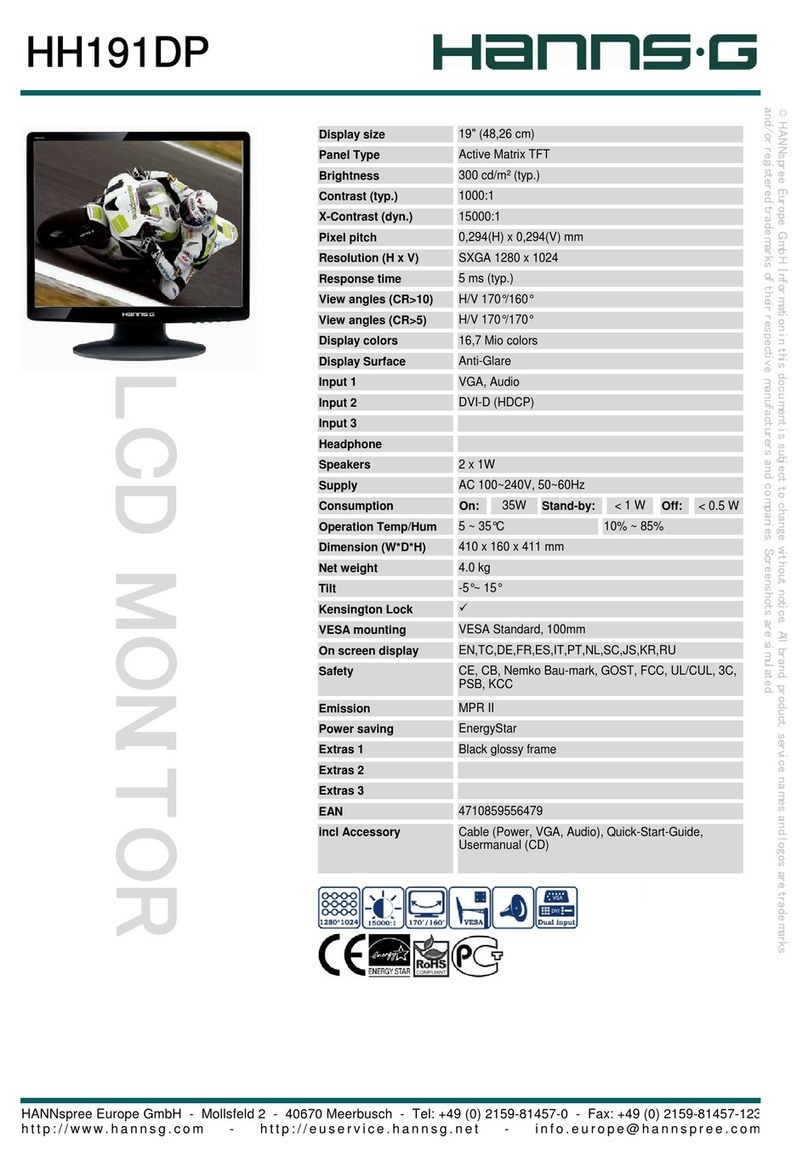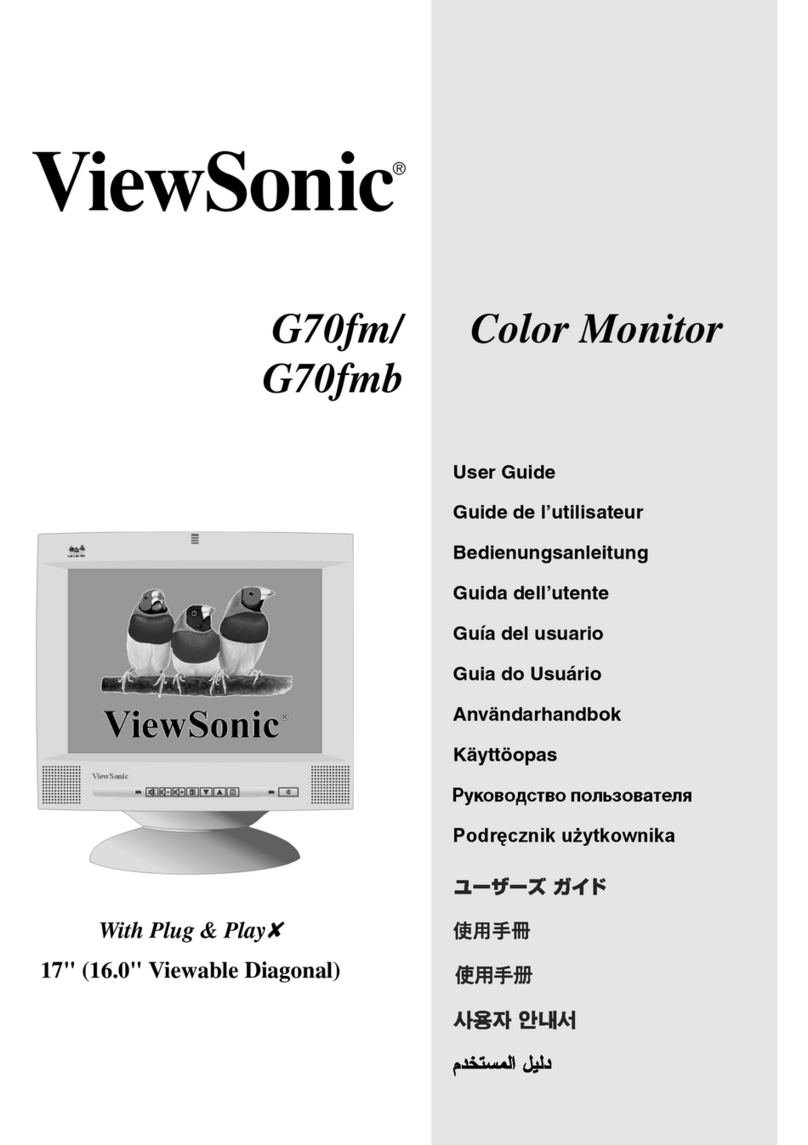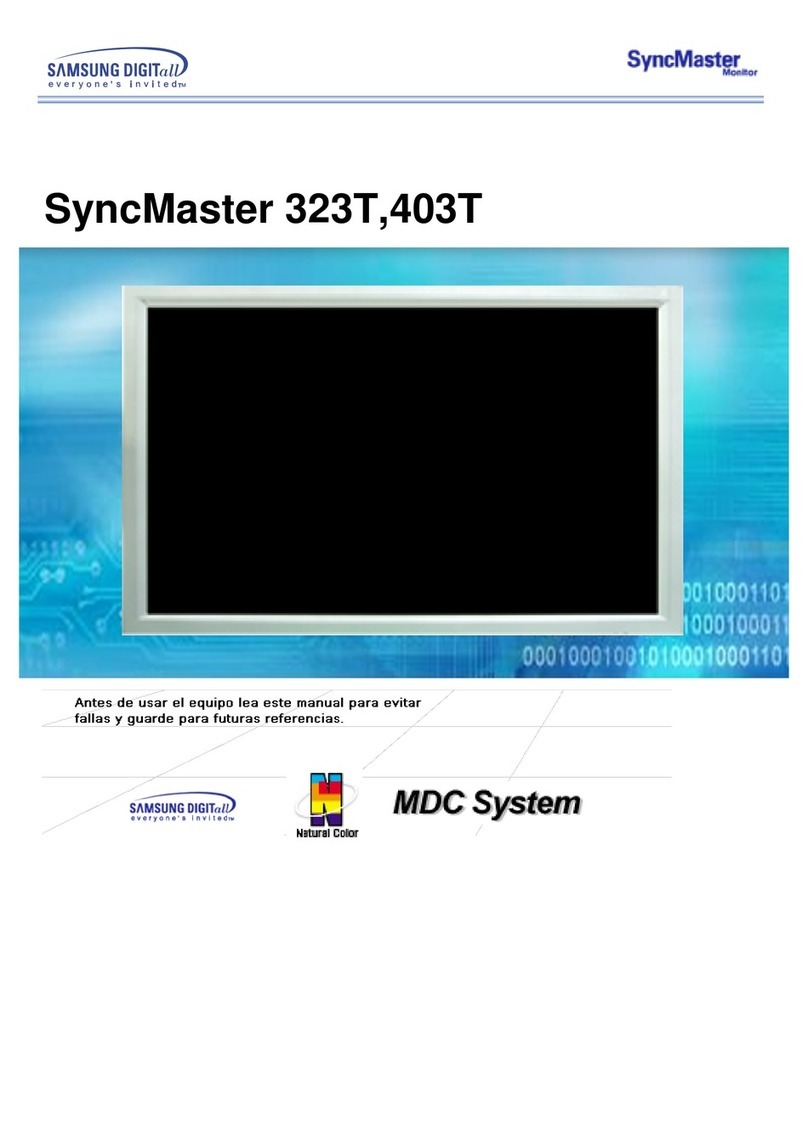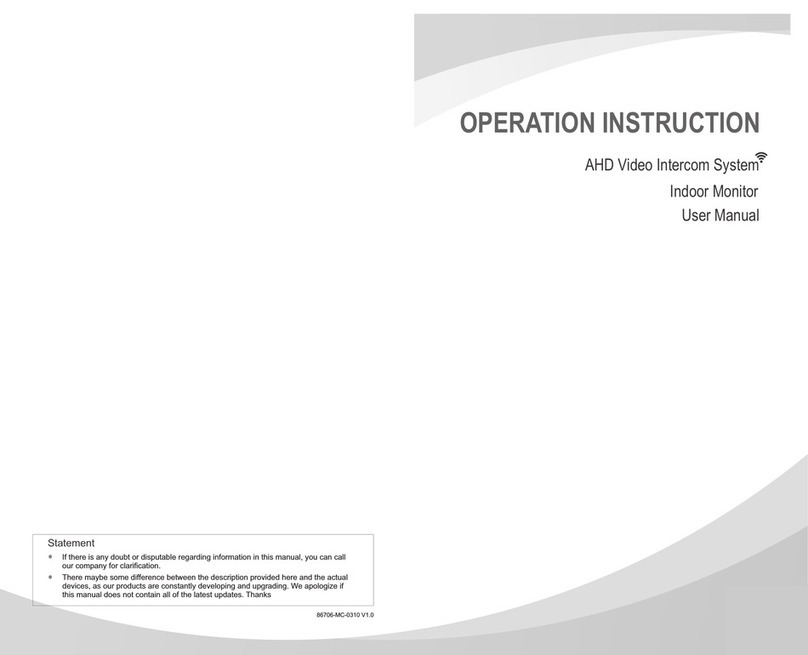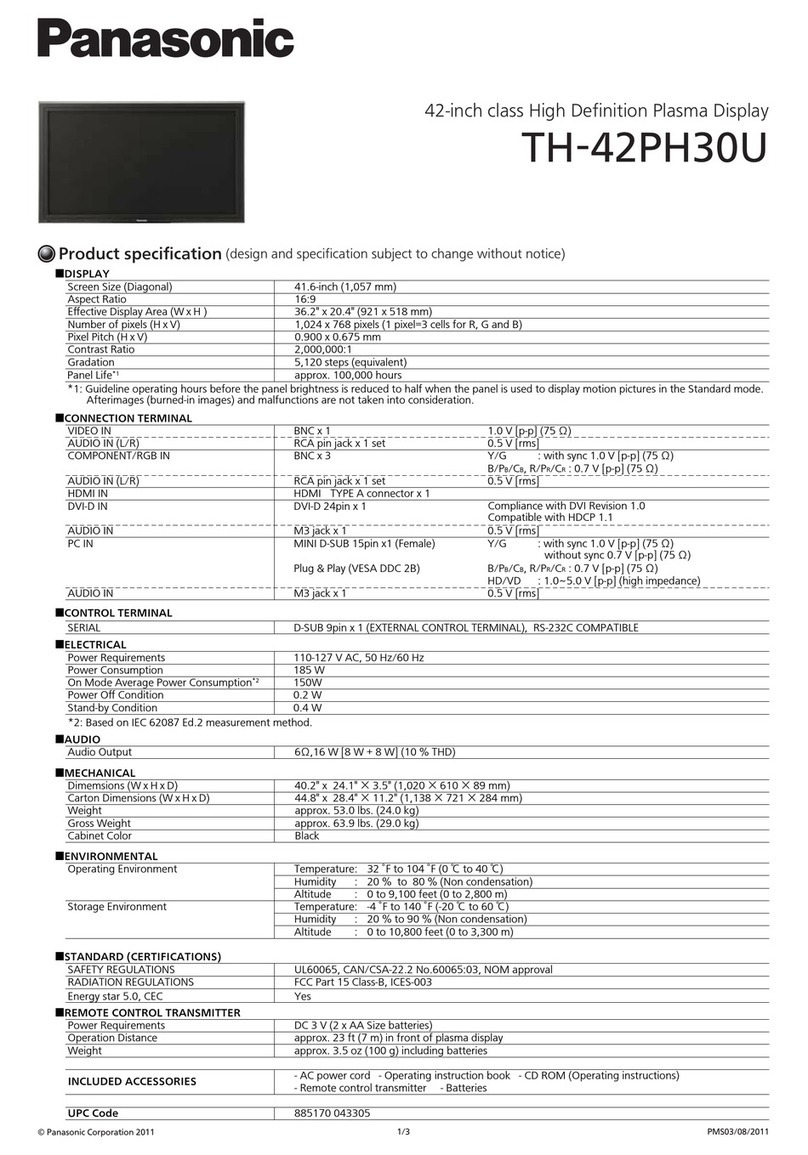GREISINGER electronic GIA 2000 Instruction manual

E32.0.02.6C-04 Manual for connection and operation of the GIA 2000 / AAG and GIR 2002 / AAG page 1of 30
Manual for connection and operation of
GIA 2000 / GIR 2002
with option AAG...
as of version 1.3
GREISINGER electronic GmbH
D - 93128 Regenstauf, Hans-Sachs-Straße 26

E32.0.02.6C-04 Manual for connection and operation of the GIA 2000 / AAG and GIR 2002 / AAG page 2of 30
I N D E X
1. SAFETY REGULATIONS............................................................................................................................................................3
2. INTRODUCTION............................................................................................................................................................................4
3. ELECTRIC CONNECTION........................................................................................................................................................5
3.1. Terminal assignment..................................................................................................................................................................5
3.2. Connection data..........................................................................................................................................................................5
3.3. Connecting an input signal.......................................................................................................................................................6
3.3.1. Connecting a Pt100 or Pt1000 RTD probe or a thermocouple probe........................................................................6
3.3.2. Connecting a 0(4)-20mA transmitter in 2-wire-technology.......................................................................................6
3.3.3. Connecting a 0(4)-20mA transmitter in 3-wire-technology.......................................................................................6
3.3.4. Connecting a 0-1V, 0-2V or 0-10V transmitter in 3-wire-technology......................................................................6
3.3.5. Connecting a 0-1/2/10V or 0-50mV transmitter in 4-wire-technology....................................................................7
3.3.6. Connecting a frequency- or rotation-signal....................................................................................................................7
3.3.7. Connecting a counter signal.............................................................................................................................................8
3.4. Connecting switching outputs (only for GIR 2002)............................................................................................................9
3.5. Common wiring of several devices.........................................................................................................................................9
4. CONFIGURATION OF THE MEASURING INPUT........................................................................................................10
4.1. Selecting an input signal type................................................................................................................................................10
4.2. Measuring voltage and current (0-50mV, 0-1V, 0-2V, 0-10V, 0-20mA, 4-20mA)......................................................11
4.3. Measuring temperature (Pt100, Pt1000 RTD probes and thermocouple type J, K, N, S or T).............................................13
4.4. Measuring of frequency (TTL, switching-contact)...........................................................................................................14
4.5. Measuring of rotation speed (TTL, switching-contact)....................................................................................................15
4.6. Up-/Downwards counter (TTL, switching-contact)..........................................................................................................16
4.7. Interface mode...........................................................................................................................................................................18
5. CONFIGURATION OF THE ANALOG OUTPUT............................................................................................................19
5.1. Scaling the analog output........................................................................................................................................................19
6. CONFIGURATION OF THE OUTPUT FUNCTIONS (ONLY FOR GIR 2002).......................................................20
6.1. Selection of the output function.............................................................................................................................................20
6.2. 2-point-controller......................................................................................................................................................................21
6.3. Minimum/maximum-alarm.....................................................................................................................................................21
7. SWITCHING POINTS AND ALARM-BOUNDARIES (ONLY FOR GIR 2002)......................................................22
7.1. Menu calling..............................................................................................................................................................................22
7.2. 2-point-controller......................................................................................................................................................................23
7.3. Minimum/maximum-alarm.....................................................................................................................................................23
8. OFFSET- AND SLOPE-ADJUSTMENT...............................................................................................................................24
8.1. Menu calling and adjustment.................................................................................................................................................24
9. MIN-/MAX-VALUE MEMORY:.............................................................................................................................................25
10. SERIAL INTERFACE:.............................................................................................................................................................25
11. ALARM DISPLAY (ONLY FOR GIR 2002)......................................................................................................................26
12. ERROR CODES..........................................................................................................................................................................26
13. SPECIFICATION.......................................................................................................................................................................28
14. DISPOSAL NOTES....................................................................................................................................................................29
15. SPECIAL FUNCTIONS (OPTIONALLY):........................................................................................................................30
15.1. Tare function...........................................................................................................................................................................30

E32.0.02.6C-04 Manual for connection and operation of the GIA 2000 / AAG and GIR 2002 / AAG page 3of 30
1. Safety regulations
This device was designed and tested considering the safety regulations for electronic measuring devices.
Faultless operation and reliability in operation of the measuring device can only be assured if the General
Safety Measures and the devices specific safety regulations mentioned in this users manual are considered.
1. Faultless operation and reliability in operation of the measuring device can only be assured if the device
is used within the climatic conditions specified in the chapter “Specifications“
2. Always disconnect the device from its supply before opening it. Take care that nobody can touch any of
the unit‘s contacts after installing the device.
3. Standard regulations for operation and safety for electrical, light and heavy current equipment have to be
observed, with particular attention paid to the national safety regulations (e.g. VDE 0100).
4. When connecting the device to other devices (e.g. the PC) the interconnection has to be designed most
thoroughly, as internal connections in third-party devices (e.g. connection of ground with protective earth)
may lead to undesired voltage potentials.
5. The device must be switched off and must be marked against using again, in case of obvious malfunc-
tions of the device which are e.g.:
-visible damage.
-no prescripted working of the device.
-storing the device under inappropriate conditions for longer time.
When not sure, the device should be sent to the manufacturer for repairing or servicing.
ATTENTION: When running electric devices, parts of them will always be electrically
live. Unless the warnings are observed serious personal injuries or damage to prop-
erty may result. Skilled personnel only should be allowed to work with this device. For
trouble-free and safe operation of the device please ensure professional transport,
storage, installation and connection as well as proper operation and maintenance.
SKILLED PERSONNEL
Are persons familiar with installation, connection, commissioning and operation of the product and have
professional qualification relating to their job.
For example:
•Training and instruction or qualifications to switch on or off, isolate, ground and mark electric circuits and
devices or systems.
•Training or instruction according to the state.
•First-aid training.
ATTENTION:
Do NOT use this product as safety or emergency stopping device, or in any other ap-
plication where failure of the product could result in personal injury or material dam-
age.
Failure to comply with these instructions could result in death or serious injury and
material damage.

E32.0.02.6C-04 Manual for connection and operation of the GIA 2000 / AAG and GIR 2002 / AAG page 4of 30
2. Introduction
The GIA 2000 is a microprocessor controlled displaying device.
The GIR 2002 is a microprocessor controlled displaying,
monitoring and controlling device.
The devices supports one universal interface for the connec-
tion of:
- Standard transmitter signals (0-20mA, 4-20mA, 0-50mV,
0-1V, 0-2V and 0-10V),
- RTD (for Pt100 and Pt1000),
- Thermocouple probes (type K, J, N, T and S),
- Frequency (TTL and switching contact).
As well as rotation measuring, counting, etc. ...
The GIR 2002 features additional one switching output, which can be configured as 2-point-controller or
min./max. alarm.
The state of the switching outputs (relays) is displayed with the LED “1”.
An upcoming alarm condition is displayed by LEDs “alarm”, “max” and “min”.
The devices are equipped with a scaleable analog output (0-10V, 0-20mA or 4-20mA).
Furthermore both devices supports one EASY BUS-interface for communicating with a host computer that
makes the device to a full functions EASYBUS-module.
When leaving our factory the GIA 2000 and GIR 2002 has been subjected to various inspection tests and is
completely calibrated.
Before the GIA 2000 or GIR 2002 can be used, it has to be configured for the cus-
tomer’s application.
Important: At the configuration of the device You have to adjust the input signal (see chapter 4) first and
then the analog output function (see chapter 5), the output function (see chapter 6) or the offset-/slope- ad-
justment (see chapter 8)
Hint: In order to avoid undefined input states and unwanted or wrong switching processes, we sug-
gest to connect the device’s switching outputs after You have configured the device properly.
Hint: By calling a configuration menu (configuration of the measuring input, configuration of the
analog output, configuration of the output function, offset- and slope-adjustment) the meas-
urement and regulation of the device will be deactivated.
By leaving the menu the device will be reinitialised and the measuring/regulation will be started
again.
At the input function “counter” the counter state will be reset by leaving the menu.
ON/SP SET
min.
OFF/Hy.
1
2
max.
ALARM
Scale
Analog
CAL
Scale
Analog
CAL
ON/SP SET
min.
OFF/Hy.
1
2
max.
GIR/GIA
ALARM
SET
1234
ON/SP SET
min.
OFF/Hy.
1
2
max.
ALARM
Scale
Analog
CAL
Scale
Analog
CAL
ON/SP SET
min.
OFF/Hy.
1
2
max.
GIR/GIA
ALARM
SET
1234

E32.0.02.6C-04 Manual for connection and operation of the GIA 2000 / AAG and GIR 2002 / AAG page 5of 30
3. Electric Connection
Wiring and commissioning of the device must be carried out by skilled personnel only.
In case of wrong wiring the device may be destroyed. We can not assume any warranty in case of
wrong wiring of the device.
3.1.Terminal assignment
15 EASYBUS-Interface
14 EASYBUS-Interface
13 Input: 0-10V
12 Input: 0-1V, 0-2V, mA, frequency, Pt100, Pt1000
11 Input: 0-50mV, thermocouples, Pt100
10 Input: GND, Pt100, Pt1000
9Transmitter supply voltage -
8Transmitter supply voltage +
7Relay 1, break contact, *1*2
6Relay 1, make contact, *1*2
5Relay 1, input, *1*2
4Analog output +
3Analog output -
2Supply voltage 230VAC, *1
1Supply voltage 230VAC, *1
*1 = or the corresponding designation on the label on the housing
*2 = not available at GIA 2000
3.2.Connection data
typical limitations
between
terminals min. max. min. max. notes
Supply voltage 1 and 2 207 VAC 244 VAC 0VAC 253 VAC or corresponding desig-
nation on the type plate
0-20mA
4-20mA 0O400 O
Analog output 0-10V 3 and 4 1000 O8Oactive signal not allowed
Relay 1
(change-over contact)*25, 6 and 7 253 VAC
10A
ohmic load
or corresponding desig-
nation on the type plate
Transmitter supply volt-
age 8 and 9 0 mA 20mA 0 mA 25 mA
Input 0-50mV, TC, ... 11 and 10 0 V 3.3 V -1 V 10 V,
I<10mA
Input mA 0 mA 20 mA 0 mA 30 mA
Input 0-1(2)V, Freq, ... 12 and 10 0 V 3.3 V -1 V 30 V,
I<6mA
Input 0-10V 13 and 10 0 V 10 V -1 V 20 V
Input Pt100 (Pt1000) 10 - 12 0O8Oactive signal not allowed
EASYBUS-interface 14 and 15 12 V 36 V 0 V 42 V
*2 =not available at GIA 2000
These limits must not be exceeded (not even for a short time) !
15 14 13 12 11 10 9 8 7 6 5 4 3 2 1
Pushbutton 5

E32.0.02.6C-04 Manual for connection and operation of the GIA 2000 / AAG and GIR 2002 / AAG page 6of 30
3.3.Connecting an input signal
Please take care not to exceed the limitations of the inputs when connecting the device as this may lead
to destruction of the device:
3.3.1. Connecting a Pt100 or Pt1000 RTD probe or a thermocouple probe
Pt1000-RTD probe (2-wire) Pt100-RTD probe (3-wire) Thermocouple probe
3.3.2. Connecting a 0(4)-20mA transmitter in 2-wire-technology
with in device integrated transmitter supply with separate transmitter supply
3.3.3. Connecting a 0(4)-20mA transmitter in 3-wire-technology
with in device integrated transmitter supply with separate transmitter supply
3.3.4. Connecting a 0-1V, 0-2V or 0-10V transmitter in 3-wire-technology
with in device integrated transmitter supply with separate transmitter supply
4-20mA
transmitter
+Uv
-Uv
8
9
10
12
4-20mA
transmitter
+Uv
-Uv
+
_power supply:
for transmitter
10
12
0(4)-20mA
transmitter
+Uv
Sig.
-Uv
8
9
10
12
0(4)-20mA
transmitter
+Uv
Sig.
-Uv
+
_power supply:
for transmitter
10
12
0-1(10)V
transmitter
+Uv
Sig.
-Uv
10V
1V/2V
8
9
10
12
13
0-1(10)V
transmitter
+Uv
Sig.
-Uv
+
_power supply:
for transmitter
10V
1V/2V
10
12
13
Pt1000
10
12 Pt100
10
11
12 TC
-
+
10
11

E32.0.02.6C-04 Manual for connection and operation of the GIA 2000 / AAG and GIR 2002 / AAG page 7of 30
3.3.5. Connecting a 0-1/2/10V or 0-50mV transmitter in 4-wire-technology
with in device integrated transmittersupply with separate transmitter supply
3.3.6. Connecting a frequency- or rotation-signal
When measuring frequency or rotation three different input signals can be selected in the device’s configu-
ration. There is the possibility of connecting an active signal (= TTL, ...), a passive sensor-signal with NPN
(= NPN-output, push-button, relay, ...) or PNP (= a PNP output switching to +Ub, high-side push-button, ...).
When configuring the device with a NPN switching output, a pull-up-resistor (~11k referring to +3.3V) is
connected internally. So when You use a device with NPN output You don‘t need to connect a resistor
externally.
When configuring the device with a PNP switching output, a pull-down resistor (~11k referring to GND) is
connected internally. So when You use a device with PNP output You don‘t need a resistor externally.
It may be that your measuring-signal source needs the connection of an external resistor e.g. the pull-up-
voltage of 3.3V is not enough for the signal source, or you want to measure in the top level frequency
range. In this case the input signal has to be treated like an active signal and you have to configure the de-
vice as „TTL“.
Hint: when connecting the device You have to take care not to exceed the limits of the input
voltage respective the input current of the frequency-input.
Connection of a transducer (with integrated supply) Connection of a transducer (with separate supply)
with TLL, NPN or PNP output with TLL, NPN or PNP output
Connection of a transducer (with integratedsupply) Connection of a transducer (with separate supply)
with NPN output and necessary external resistor with NPN output and necessary external resistor
Hint: Rv = 3k (with power supply voltage = 12V) or 7k (with power supply voltage = 24V), device configuration: Sens = TTL
50mV
10V
transmitter
+Uv
Sig-
-Uv
Sig+
1V/2V
8
9
10
11
12
13 +
_power supply:
for transmitter
transmitter
+Uv
Sig-
-Uv
Sig+
10
11
12
13
50mV
10V
1V/2V
transducer
+Uv
Sig.
-Uv
8
9
10
12
transducer
+Uv
Sig.
-Uv
+
_Netzteil:
for transducer
10
12
Rv transducer
+Uv
Sig.
-Uv
8
9
10
12
+
_power supply:
for transducer
Rv transducer
+Uv
Sig.
-Uv
10
12

E32.0.02.6C-04 Manual for connection and operation of the GIA 2000 / AAG and GIR 2002 / AAG page 8of 30
Connecting of a transducer (with integrated supply) Connecting of a transducer (with separate supply)
PNP output with external resistor wiring. PNP output and external resistor wiring.
Hint:Rv2 = 600 O, Rv1 = 1.8k O(with power supply voltage = 12V) or 4.2k O(with power supply voltage = 24V), device config.: Sens = TTL
(Rv1 is a current limiting resistor and may be shorted if necessary. It should never exceed the mentioned value.)
3.3.7. Connecting a counter signal
When configuring the device you can select 3 different input signal modes similar to the connection of
frequency- and rotation-signals.
The connection of a sensor-signal for a counter-signal is the same used for the frequency- and rotation-
signal. Please use the wiring diagram given in chapter 3.3.6.
There is the possibility to reset the counter. When connecting contact 11 with GND (contact 10) the
counter will be reset. You can do this manually (e.g. with the help of a push-button) or automatically
(with one switching output of the device – if available).
Hint: When connecting the device, take care not to exceed the limits of the input-voltage or the input-
current of the frequency input.
manually reset the device with the help of a push-button
automatically resetting with the help of output 2 and ad-
ditional resetting the device via push-button
transducer
+Uv
Sig.
-Uv
Rv2
Rv1
8
9
10
12
Rv2
+
_power supply:
for transducer
transducer
+Uv
Sig.
-Uv
Rv1
10
12
Reset-
button
8
9
10
11
12 transducer
+Uv
Sig.
-Uv
3
4
Reset-
button
8
9
10
11
12 transducer
+Uv
Sig.
-Uv

E32.0.02.6C-04 Manual for connection and operation of the GIA 2000 / AAG and GIR 2002 / AAG page 9of 30
3.4.Connecting switching outputs (only for GIR 2002)
Hint: In order to avoid unwanted or wrong switching processes, we suggest to connect the
device’s switching outputs after you have configured the device’s switching outputs
properly.
The device features two switching outputs (relays) by default.
Please take care that you must not exceed the limits of the voltage and of the maximum current
of the switching outputs (not even for a short period of time). Please take extreme care when
switching inductive loads (like coils or relays, etc.). Because of their high voltage peaks, protec-
tive measures (e.g. RC-element) to limit these peaks have to be taken.
Note: In case of configuring one output as an alarm output, the output will be active in idle state (no
alarm present). The output relay opens when an alarm condition occurred.
3.5.Common wiring of several devices
At the standard devices the power supply, measuring input, transmitter supply and the serial interface are
electrically isolated of each other.
At device options (e.g. dc-supply) it can occur that this isolation is not completely guaranteed (e.g. connec-
tion of – power supply to GND).
When interconnecting several of this devices you have to make sure that there is no potential displacement.

E32.0.02.6C-04 Manual for connection and operation of the GIA 2000 / AAG and GIR 2002 / AAG page 10 of 30
4. Configuration of the measuring input
General description and notes to the operating of the menu
By means of button 1 you can go to the next parameter.
Additionally a given changing in the parameter setting can be confirmed by this button and the new value
will be saved. Afterwards it will be changed to the parameter view again.
By means of button 2 and 3you can go from the parameter view to the parameter setting and adjust its
value there.
Hint: The buttons 2 and 3 are featured with a ‘roll-function‘. When pressing the button once the value will be raised
(button 2) by one or lowered (button 3) by one. When holding the button pressed for longer than 1 sec. the value
starts counting up or down, the counting speed will be raised after a short period of time.
The device also features a ‘overflow-function‘, when reaching the upper limit of the range, the device switches to
the lower limit, vice versa.
By means of button 4 agiven changing will be cancelled in the parameter setting. The changing will be dis-
carded and the former parameter value will be preserved.
In the parameter view button 4 closes the menu.
Please note: If you don’t press any button for more than 10 sec. in the parameter setting, the adjustment will
be cancelled, the changing discarded and it will be changed to the parameter view. If you don’t
press any button for more than 60 sec. in the menu, the menu will be automatically closed.
4.1.Selecting an input signal type
-Turn the device on and wait until it completed its built-in seg-
ment test.
-At the same time press the pushbutton on the rear side (but-
ton 5) and button 2 for >2 seconds.
The device displays “InP“ ('INPUT').
-Use button 2 or button 3 to select the input signal
(see table below).
-Validate the selection with button 1. The display will show “InP“ again.
Depending on the selected input signal, additional configurations will be needed.
Input type Signal to select as
input proceed in chapter
0 – 10 V
0 – 2 V
0 – 1 V
Voltage signal
0 – 50 mV
U4.2
4 – 20 mACurrent signal 0 – 20 mA I4.2
Pt100RTD Pt1000 t.rES 4.3
NiCr-Ni (type K)
Pt10Rh-Pt (type S)
NiCrSi-NiSi (type N)
Fe-CuNi (type J)
Thermocouples
Cu-CuNi (type T)
t.tc 4.3
TTL-signalFrequency Switch-contact NPN, PNP FrEq 4.4
TTL-signalRotation Switch-contact NPN, PNP rPn 4.5
ON/SP SET
min.
OFF/Hy.
1
2
max.
ALARM
Scale
Analog
CAL
Scale
Analog
CAL
ON/SP SET
min.
OFF/Hy.
1
2
max.
GIR/GIA
ALARM
SET
1234

E32.0.02.6C-04 Manual for connection and operation of the GIA 2000 / AAG and GIR 2002 / AAG page 11 of 30
TTL-signalCounter up Switch-contact NPN, PNP Co.uP 4.6
TTL-signalCounter up Switch-contact NPN, PNP Co.dn 4.6
Interface mode Serial interface SEri 4.7
Please note: When changing the measuring mode “InP“ all settings will be reset. Therefore you have
to set all the other settings of the input configuration again. If there is a non-set parame-
ter, the device will display “cccc” as an sign for a incomplete configuration after the
menu is closed.
Note: When changing the measuring mode “InP“ the values for the offset and slope-adjustment
will be reset. Furthermore a change of the device scaling for standard signals (di.Lo, di.Hi)
or of the resolution and unit for temperature can possibly influence the values of the offset
and slope-adjustment. Therefore you may check your offset and slope-adjustment after
changing the input configuration.
The change of the device scaling for standard signals (di.Lo, di.Hi) or of the resolution and
unit for temperature can possibly change the switching and alarm points. Therefore you
may check your output settings afterwards.
4.2.Measuring voltage and current (0-50mV, 0-1V, 0-2V, 0-10V, 0-20mA, 4-20mA)
This chapter describes how you configure the device for measuring voltage- or current-signals from an ex-
ternal transmitter. This instruction demands that you selected “U“ or “I“ as your desired input type like it is
explained in chapter 4.1. The display has to show “InP“.
-Press button 1. The display shows “SEnS“.
-Select the desired input signal using button 2 or button 3.
Display Input signal (voltage measuring) Notes
10.00 0 – 10 V
2.00 0 – 2 V
1.00 0 – 1 V
0.050 0 – 50 mV
Display Input signal
(current measuring) Notes
4-20 4 – 20 mA
0-20 0 – 20 mA
-Validate the selected input signal by pressing button 1. The display shows “SEnS“ again.
-Press button 1 again, the display will show “dP“ (decimal point).
-Select the desired decimal point place by pressing button 2 or button 3.
-Validate the selected decimal position by pressing button 1. The display shows “dP“ again.
-Press button 1 again, the display will show “di.Lo“ (Display Low = low display value).
-Use button 2 or button 3 to select the desired value the device should display when a 0mA, 4mA or 0V
input signal is attached.
-Validate the selected value by pressing button 1. The display shows “di.Lo“ again.
-Press button 1 again, the display will show “di.Hi“ (Display High = high display value).
-Use button 2 or button 3 to select the desired value the device should display when a 20mA, 50mV, 1V,
2V or 10V input signal is attached.

E32.0.02.6C-04 Manual for connection and operation of the GIA 2000 / AAG and GIR 2002 / AAG page 12 of 30
-Validate the selected value by pressing button 1. The display shows “di.Hi“ again.
-Press button 1 again. The display will show “Li“ (Limit = Measuring range limit).
-Use button 2 or button 3 to select the desired measuring range limit..
Display Measuring range limit Notes
off Deactivated Exceeding of the measuring range limit is
tolerable until the measuring limit (see note).
on.Er
(on error) Active, (displays error)
The measuring range limit is exactly bounded
by the input signal. When exceeding or
shortfalling the input signal the device will
display an error message.
on.rG
(on range) Active, (displays the selected limit)
The measuring range limit is exactly bounded
by the input signal. When exceeding or
shortfalling the input signal the device will
display the selected lower/upper display
value.
[e.g. humidity: when shortfalling or exceeding,
the device will display 0% or 100%]
Note: When exceeding the measuring limit (~ upper measuring range + 10%) independently from the limit setting, the
device will always display the corresponding error message (“Err.1“).
When shortfalling the measuring limit (~ lower measuring range - 10%) independently from the limit setting, the
device will always display the corresponding error message (“Err.2“), if the input signal 4-20mA is chosen.
A shortfalling of 0V or 0mA is not detected.
-Press button 1 to validate the selection, the display shows “Li“ again.
-When pressing button 1 again, the display will show “FiLt“ (Filter = digital filter).
-Use button 2 or button 3 to select the desired filter [in sec.].
Selectable values: 0.01 ... 2.00 sec.
Explanation: this digital filter is a digital replica of a low pass filter.
Note: when using the input signal 0-50mV a filter value of at least 0.2 is recommended
-Press button 1 to validate your value, the display shows “FiLt“ again.
-When pressing button 1 again, the display shows “InP“ ('INPUT') again.
Now your device is adjusted to your input signal.
-Press now button 4 to exit the input configuration menu.

E32.0.02.6C-04 Manual for connection and operation of the GIA 2000 / AAG and GIR 2002 / AAG page 13 of 30
4.3.Measuring temperature (Pt100, Pt1000 RTD probes and thermocouple type J, K, N, S or T)
This chapter describes how to configure the device for temperature measuring with the help of external plati-
num RTD probes or thermocouple probes. This instruction demands that you selected “t.res“ or “t.tc“ as your
desired input type like it is explained in chapter 4.1. The device has to display “InP“.
-When pressing button 1 the display shows “SEnS“.
-Use button 2 or button 3 to select your desired input signal.
Display Input signal
(RTD) Notes
Meas.-range: -50.0 ... +200.0 °C (-58.0 ... + 392.0 °F)
100 Pt100 (3-wire) Meas.-range: -200 ... + 850 °C (-328 ... + 1562 °F)
1000 Pt1000 (2-wire) Meas.-range: -200 ... + 850 °C (-328 ... + 1562 °F)
Display Input signal
(Thermocouples) Notes
Meas.-range: -270 ... +1372 °C (-454 ... + 2502 °F)
niCr NiCr-Ni (Type K) Meas.-range: -70.0 ... +250.0 °C (-94.0 ... + 482.0 °F)
SPt10Rh-Pt (Type S) Meas.-range: -50 ... +1750 °C (- 58 ... + 3182 °F)
Meas.-range: -270 ... +1350 °C (-454 ... + 2462 °F)
nNiCrSi-NiSi (Type N) Meas.-range: -100.0 ... +300.0 °C (-148.0 ... + 572.0 °F)
Meas.-range: -170 ... + 950 °C (-274 ... + 1742 °F)
JFe-CuNi (Type J) Meas.-range: -70.0 ... +300.0 °C (-94.0 ... + 572.0 °F)
Meas.-range: -270 ... + 400 °C (-454 ... + 752 °F)
tCu-CuNi (Type T) Meas.-range: -70.0 ... +200.0 °C (-94.0 ... + 392.0 °F)
-Validate the selected input signal by pressing button 1. The display shows “SEnS“ again.
-Press button 1 to again, the display will show “rES“ (resolution).
This menu item is not available at the input signal Pt1000 and Pt10Rh-Pt (type S).
-You can chose whether the temperature is displayed with 0.1° or 1° with button 2 or 3.
-Validate the selected resolution by pressing button 1. The display shows “rES“ again.
-Press button 1 again, the display will show “Unit“ (the unit you want to display).
-Use button 2 or button 3 to select whether you want to display °C or °F.
-Validate the selected unit by pressing button 1. The display shows “Unit“ again.
-Press button 1 to again, the display will show “FiLt“ (Filter = digital filter).
-Use button 2 or button 3 for setting the desired filter value [in sec.].
Selectable values: 0.01 ... 2.00 sec.
Explanation: this digital filter is a digital replica of a low pass filter.
-Press button 1 to validate your value, the display shows “FiLt“ again.
-When pressing button 1 again, the display shows “InP“ ('INPUT') again.
Now your device is adjusted to your input signal.
-Press now button 4 to exit the input configuration menu.

E32.0.02.6C-04 Manual for connection and operation of the GIA 2000 / AAG and GIR 2002 / AAG page 14 of 30
4.4.Measuring of frequency (TTL, switching-contact)
This chapter describes how to configure the device for measuring frequency.
This instruction demands that you selected “FrEq“ as your desired input type like it is explained in chapter
4.1. The device has to display “InP“.
-When pressing button 1 the display will show “SEnS“.
-Use button 2 or button 3 to select the desired input signal.
Display Input signal Note
ttL TTL-signal
nPn Switching contact, NPN
For direct connection of a passive switching
contact (e.g. push button, relay) or Transmitter
with NPN output.
A pull-up-resistor is internally connected.
Hint: when using push-buttons or relays, they must
bebounce-free!
PnP Switching contact, PNP For direct connection of a transmitter with
PNP output.
A pull-down-resistor is internally connected.
Hint: For the connection of a frequency-transmitter, please follow the instructions given in chapter 3.3.6
When connecting a switching-contact-transmitter with increased frequency range (= with external circuitry)
you have to select TTL as your desired input signal.
-Validate your selected input signal by pressing button 1. The display shows “SEnS“ again.
-When pressing button 1 again, the display will show “Fr.Lo“ (frequency low = lower frequency range limit).
-Use button 2 or button 3 to select the lowest frequency that may occur when measuring.
-Press button 1 to validate your selection. The display shows “Fr.Lo“ again.
-When pressing button 1 again, the display will show “Fr.Hi“ (frequency high = upper frequency range limit).
-Use button 2 or button 3 to select the highest frequency that may occur when measuring.
-Press button 1 to validate your selection. The display shows “Fr.Hi“ again.
-When pressing button 1 again, the display will show “dP“ (decimal point).
-Use button 2 or button 3 to select the desired decimal point position.
-Press button 1 to validate your selection. The display shows “dP“ again.
-When pressing button 1 again, the display will show “di.Lo“ (display low = display at lower frequency range limit).
-Set the value the device shall display at the lower frequency range limit by pressing button 2 or button 3.
-Press button 1 to validate your selection. The display shows “di.Lo“ again.
-When pressing button 1 again, the display will show “di.Hi“ (display high = display at upper frequency range limit).
-Set the value the device shall display at the upper frequency range limit by pressing button 2 or button 3.
-Press button 1 to validate your selection. The display shows “di.Hi“ again.
-When pressing button 1 again, the display will show “Li“ (limit = measuring range limitation).
-Use button 2 or button 3 to select the desired measuring range limitation.
Display Measuring range limit Note
off Inactive Exceeding of the measuring-frequency is tol-
erable until you reach the maximum measur-
ing range limit.
on.Er active, (error indicator)
The measuring range is exactly bounded by
the selected frequency-measuring-range-limit.
When exceeding or shortfalling of the limit the
device will display an error message.

E32.0.02.6C-04 Manual for connection and operation of the GIA 2000 / AAG and GIR 2002 / AAG page 15 of 30
on.rG active, (frequency range limit)
The measuring range is exactly bounded by
the selected frequency-measuring-range-limit.
When exceeding or shortfalling of the limit the
device will display the lower or upper display-
range-limit.
[e.g. humidity: when shortfalling or exceeding,
the device will display 0% or 100%]
Hint: When exceeding the maximum range limit (10kHz) independently from the limit setting an error message will
be displayed (“Err.1“).
-Press button 1 to validate your selection. The display shows “Li“ again.
-When pressing button 1 again, the display will show “FiLt“ (Filter = digital filter).
-Use button 2 or button 3 to select the desired filter value [in sec.].
Usable values: 0.01 ... 2.00 sec.
Explanation: this digital filter is a digital replica of a low pass filter.
-Press button 1 to validate your selection. The display shows “FiLt“ again.
-When pressing button 1 again, the display shows “InP“ ('INPUT') again.
Now your device is adjusted to your input signal.
-Press now button 4 to exit the input configuration menu.
4.5.Measuring of rotation speed (TTL, switching-contact)
This chapter describes how to configure the device for measuring rotation speed.
This instruction demands that you selected “rPn“ as your desired input type like it is explained in chapter 4.1.
The device has to display “InP“.
-When pressing button 1 the device will display “SEnS“.
-Use button 2 or button 3 to select the desired input signal.
Display Input-signal Notes
ttL TTL-signal
nPn Switching contact, NPN
For direct connection of a passive switching
contact (e.g. push button, relay) or transmitter
with NPN output.
A pull-up-resistor is internally connected.
Hint: when using push-buttons or relays, they must
bebounce-free!
PnP Switching contact, PNP For direct connection of a transmitter with
PNP output.
A pull-down-resistor is internally connected.
Hint: For the connection of a frequency-transmitter, please follow the instructions given in chapter 3.3.6
When connecting a switching-contact-transmitter with increased frequency range (= with external circuitry)
you have to select TTL as your desired input signal.
-Press button 1 to validate your selected input signal. The display shows “SEnS“ again.
-When pressing button 1 again, the display will show “diu“ (divisor).
-Use button 2 or 3 to select your desired divisor.
Set the divisor to the pulses per rotation the transmitter supplies.
-Press button 1 to validate your selection. The display shows “diu“ again.
-When pressing button 1 again, the display will show “dP“ (decimal point).
-Use button 2 or button 3 to select the desired decimal point position.
Use the decimal point position to change the resolution of your measurement. The more the decimal
point position is on the left, the finer the resolution will become. Please note that you lower the maximum
value that can be displayed, either.

E32.0.02.6C-04 Manual for connection and operation of the GIA 2000 / AAG and GIR 2002 / AAG page 16 of 30
Example: your engine runs with 50 rotations per minute.
With no decimal point the device will display something like 49 – 50 – 51, the maximum value that can
be displayed is 9999 rotations per minute.
With the decimal point position on the left e.g. XX.XX the device will display something like 49.99 –
50.00 – 50.01, but the maximum value that can be displayed is 99.99 rotations per minute.
-Press button 1 to validate your selection. The display shows “dP“ again.
-When pressing button 1 again, the display shows “InP“ ('INPUT') again.
Now your device is adjusted to your input signal.
-Press now button 4 to exit the input configuration menu.
4.6.Up-/Downwards counter (TTL, switching-contact)
The upwards counter starts counting upwards from 0 according to its settings.
The downwards counter starts counting downwards from the upper value that had been selected.
The present value of the counter can be reset anytime by connecting pin 11 to GND (pin 10). The counter
starts from its beginning as you disconnect pin 11 and pin 10.
Feature: The present counter value won‘t be lost if the voltage supply is disconnected. After restarting the
counter starts from this value.
This chapter describes how to configure the device as a counter.
This instruction demands that you selected “Co.up“ or “Co.dn“ as your desired input type like it is explained
in chapter 4.1.The device has to display “InP“.
-When pressing button 1 the display will show “SEnS“.
-Use button 2 or button 3 to select the desired input signal.
Display Input-signal Note
ttL TTL-signal
nPn Switching contact, NPN
For direct connection of a passive switching
contact (e.g. push button, relay) or transmitter
with NPN output.
A pull-up-resistor is internally connected.
Hint: when using push-buttons or relays, they must
bebounce-free!
PnP Switching contact, PNP For direct connection of a transmitter with
PNP output.
A pull-down-resistor is internally connected.
Hint: For connecting a frequency-transmitter, please follow the instructions given in chapter 3.3.7
When connecting a switching-contact-transmitter with increased frequency range (= with external circuit)
you have to select TTL as your desired input signal.
-Press button 1 to validate your selected input signal. The display shows “SenS“ again.
-When pressing button 1 again, the device will be displaying “EdGE“ (signal edge).
-Use button 2 or button 3 to select the desired signal edge.
Display Signal edge Note
PoS Positive The counter is triggered on the positive (ris-
ing) edge.
nEG Negative The counter is triggered on the negative (fal-
ling) edge.
-Press button 1 to validate your selection, the display shows “EdGE“ again.
-When pressing button 1 again, the display will show “diu“ (divisor = pre-scaling factor).

E32.0.02.6C-04 Manual for connection and operation of the GIA 2000 / AAG and GIR 2002 / AAG page 17 of 30
-Use button 2 or button 3 to select the desired pre-scaling factor.
The incoming pulses will be divided with the selected pre-scaling factor, after that they will be transmitted to the de-
vice for further processing.
By this factor you can adapt the device to your transmitter or select a pre-scaling factor for large values
Example 1: Your flow rate transmitter supplies 165 pulses per litre. When setting a pre-scaling factor of 165 every
165th pulse (so 1 pulse per litre) will be used for further processing.
Example 2: Your transmitter is supplying about 5 000 000 pulses during the measurement, which exceeds the limit
of the GIA20EB. But when setting a pre-scaling factor of 1000 only every 1000th pulse is used for further process-
ing. So you only got a value 5000 which won’t exceed the limit of the GIA20EB.
-Press button 1 to validate your selection. The display shows “diu“ again.
-Press button 1 again. The display shows “Co.Hi“ (counter high = upper counting range limit).
-Use button 2 or button 3 to select the maximum pulse-count (after pre-scaling factor) for the counting
process.
Example:Your flow rate transmitter is supplying 1800 pulses per litre, you selected a pre-scaling factor of 100 and
you are expecting a maximum flow rate of 300 litres during the measurement. With a pre-scaling factor of 100 se-
lected, you will get 18 pulses per litre. With a maximum flow rate of 300 litres you will be getting a pulse count of 18
* 300 = 5400.
-Press button 1 to validate your selection. The display shows “Co.Hi“ again.
-When pressing button 1 again, the device will be displaying “dP“ (decimal point).
-Use button 2 or button 3 to select the desired decimal point position.
-Press button 1 to validate your selected decimal point position. The display shows “dP“ again.
-Press button 1 again. The display shows “di.Hi“ (display high = upper display range limit).
-Use button 2 or button 3 to set the value to be displayed when the maximum pulse (setting of co.Hi)
count is reached.
Example:Your flow rate transmitter is supplying 1800 pulses per litre and you are expecting a maximum flow rate of
300 litres. You selected a pre-scaling factor of 100 and a counter range limit of 5400. When wanting a resolution of
0.1 litres shown in the display of the device you would have to set the decimal point position to ---.- and a display
range limit of 300.0.
-Press button 1 to validate your selection. The display shows “di.Hi“ again.
-Press button 1. The display will show “Li“ (Limit = measuring range limit).
-Use button 2 or button 3 to select the desired measuring range limitation.
Display Measuring range limit Note
off Inactive Exceeding of the counter range is tolerable
until you reach the maximum measuring
range limit.
on.Er active, (error indicator)
The measuring range is exactly bounded by
the selected counter-range-limit. When ex-
ceeding or shortfalling of the limit the device
will display an error message.
on.rG active, (measuring range limit)
The measuring range is exactly bounded by
the selected counter-range-limit. When ex-
ceeding or shortfalling of the limit the device
will display the upper counter-range-limit or 0
Hint: The lower counter-range-limit (for configured downwards counter) is fixed to 0.
-Press button 1 to validate your selection. The display shows “Li“ again.
-When pressing button 1 again, the display shows “InP“ ('INPUT') again.
Now your device is adjusted to your input signal.
-Press now button 4 to exit the input configuration menu.

E32.0.02.6C-04 Manual for connection and operation of the GIA 2000 / AAG and GIR 2002 / AAG page 18 of 30
4.7.Interface mode
When the device is in the interface mode it won’t make any measurements by itself. The value shown in the
device’s display is sent via serial interface. But the switching and alarm functions of the displayed value are
still available.
The EASY BUS-Address of the device needed for the communication can be set manually with the device itself
or with the help of an EASY BUS-software (like EbxKonfig). Please note, when carrying out an EASYBUS-
system-initialisation the device’s address will be reset automatically.
This chapter describes how to configure the device as an EASY BUS-display.
This instruction demands that you selected “SEri“ as your desired input type like it is explained in chapter 4.1
The device has to display “InP“.
-When pressing button 1 again, the device will display “Adr“ (address).
-Use button 2 or button 3 to select the desired address [0 ... 239] of the device.
-Press button 1 to validate the selected device address. The display shows “Adr“ again.
-When pressing button 1 again, the device will be displaying “dP“ (decimal point).
-Use button 2 or button 3 to select the desired decimal point position.
-Press button 1 to validate your selected decimal point position. The display shows “dP“ again.
-When pressing button 1 again, the display shows “InP“ ('INPUT') again.
You don’t need any further configuration.
-Press now button 4 to exit the input configuration menu.

E32.0.02.6C-04 Manual for connection and operation of the GIA 2000 / AAG and GIR 2002 / AAG page 19 of 30
5. Configuration of the analog output
A change of the input configuration can possibly influence the configuration of the analog output.
(e.g. changing of scaling for standard signals or changing of resolution or unit for temperature)
Therefore the analog output configuration should be done after the input configuration has been
finished.
Additionally you may check your output settings after the input configuration has been changed.
General description and notes to the operating of the menu
By means of button 1 you can go to the next parameter.
Additionally a given changing in the parameter setting can be confirmed by this button and the new value
will be saved. Afterwards it will be changed to the parameter view again.
By means of button 2 and 3you can go from the parameter view to the parameter setting and adjust its
value there.
Hint: The buttons 2 and 3 are featured with a ‘roll-function‘. When pressing the button once the value will be raised
(button 2) by one or lowered (button 3) by one. When holding the button pressed for longer than 1 sec. the value
starts counting up or down, the counting speed will be raised after a short period of time.
The device also features a ‘overflow-function‘, when reaching the upper limit of the range, the device switches to
the lower limit, vice versa.
By means of button 4 agiven changing will be cancelled in the parameter setting. The changing will be dis-
carded and the former parameter value will be preserved.
In the parameter view button 4 closes the menu.
Please note: If you don’t press any button for more than 10 sec. in the parameter setting, the adjustment will be
cancelled, the changing discarded and it will be changed to the parameter view. If you don’t press
any button for more than 60 sec. in the menu, the menu will be automatically closed.
5.1. Scaling the analog output
The analog output can be scaled within the display range.
-Turn the device on and wait until it completed its built-in seg-
ment test.
-At the same time press the pushbutton on the rear side
(button 5) and button 1 for >2 seconds.
The device displays “dA.Lo“ (d/a converter low = low analog output value).
-Use button 2 or button 3 to select the desired display value corresponding to the analog output value
0mA, 4mA or 0V.
-Validate the selected value by pressing button 1. The display shows “dA.Lo“ again.
-Press button 1 again, the display will show “dA.Hi“(d/a converter high = high analog output value).
-Use button 2 or button 3 to select the desired display value corresponding to the analog output value
20mA or 10V
-Validate the selected value by pressing button 1. The display shows “dA.Hi“ again.
-Press button 1 again, the display will show “dA.Er“ (d/a converter error = preferred state of analog output).
-Use button 2 or button 3 to set the preferred analog output state in case of an error.
Display Preferred state of the output Note
off Inactive in case of an error output signal = 0 mA or 0 V
on Active in case of an error output signal = >23 mA or >10.5 V
-Press button 1 to validate the selection. The display shows “dA.Er“ again.
-When pressing button 1 again, the display shows “dA.Lo“ again.
Now you have finished the analog output configuration.
-Press now button 4 to exit the analog output configuration menu.
ON/SP SET
min.
OFF/Hy.
1
2
max.
ALARM
Scale
Analog
CAL
Scale
Analog
CAL
ON/SP SET
min.
OFF/Hy.
1
2
max.
GIR/GIA
ALARM
SET
1 2 3 4

E32.0.02.6C-04 Manual for connection and operation of the GIA 2000 / AAG and GIR 2002 / AAG page 20 of 30
6. Configuration of the output functions (only for GIR 2002)
A change of the input configuration can possibly influence the switching points and alarm bounda-
ries. (e.g. changing of scaling for standard signals or changing of resolution or unit for temperature)
Therefore the output configuration and switching points / alarm boundaries adjustment should be
done after the input configuration has been finished.
Additionally you may check your output settings after the input configuration has been changed.
General description and notes to the operating of the menu
By means of button 1 you can go to the next parameter.
Additionally a given changing in the parameter setting can be confirmed by this button and the new value
will be saved. Afterwards it will be changed to the parameter view again.
By means of button 2 and 3you can go from the parameter view to the parameter setting and adjust its
value there.
Hint: The buttons 2 and 3 are featured with a ‘roll-function‘. When pressing the button once the value will be raised
(button 2) by one or lowered (button 3) by one. When holding the button pressed for longer than 1 sec. the value
starts counting up or down, the counting speed will be raised after a short period of time.
The device also features a ‘overflow-function‘, when reaching the upper limit of the range, the device switches to
the lower limit, vice versa.
By means of button 4 agiven changing will be cancelled in the parameter setting. The changing will be dis-
carded and the former parameter value will be preserved.
In the parameter view button 4 closes the menu.
Please note: If you don’t press any button for more than 10 sec. in the parameter setting, the adjustment will
be cancelled, the changing discarded and it will be changed to the parameter view. If you don’t
press any button for more than 60 sec. in the menu, the menu will be automatically closed.
6.1.Selection of the output function
-Turn the device on and wait until it completed its built-in seg-
ment test.
-At the same time press the pushbutton on the rear side (but-
ton 5) and button 1 for >2 seconds.
The device displays “outP“ ('output').
-Use button 2 or button 3 to select the output function.
According your selection the outlets will be allocated as the following table shows:
Description To select
as output Output 1
(change-over
contact) See chapter
No output, device is
used as display unit no off --
2-point-controller 2P Switching function 1 6.2
Min-/Max-alarm AL.F1 Min-/Max-alarm,
inverse 6.3
-Press button 1 to validate the selected output function. The display shows “outP“ again.
Hint: The settings for the switching and alarm points can be made later in an extra menu (see chapter 7)
ON/SP SET
min.
OFF/Hy.
1
2
max.
ALARM
Scale
Analog
CAL
Scale
Analog
CAL
ON/SP SET
min.
OFF/Hy.
1
2
max.
GIR/GIA
ALARM
SET
1 2 3 4
This manual suits for next models
1
Table of contents

